Microsoft BUILD: Windows 8, A Pre-Beta Preview
by Brian Klug & Ryan Smith on September 13, 2011 12:05 PM EST- Posted in
- BUILD
- Windows
- Microsoft
- Windows 8
- Trade Shows
Mobile Experience Side
Coming from the smartphone side of things, I really see many shades of WP7 inside Windows 8. That’s actually dramatically understating the state of things - the core of what we’ve been shown of Windows 8 that’s new literally is either adopted from or directly analogous to much of WP7.
It doesn’t come as a surprise to me at all that the desktop Windows experience is moving in this direction, (and it seems as though the Xbox 360 interface will follow shortly). The positive result is that Windows 8’s touch experience feels much closer to the ground-up approach Android Honeycomb or iOS have taken than the than the “Tablet-Edition” versions of Windows XP and the tablet integration in Vista and 7. I used a UMPC and remember Origami and how that application lived as its own standalone mode of operation as an application within windows. What Windows 8 is the inverse - Windows now lives inside a Metro-themed Start screen that looks like WP7 for the desktop. Or at least it does in this demo we’ve been shown currently.
The tablet experience is now absolutely on par with modern mobile OSes - sure there are a few more things that need to be included, but the foundation is there for Windows to suddenly become more than an OS that also can do touch-based interaction.
IE 10
Microsoft has been actively promoting IE 10 since MIX 11, with two platform previews so far, and IE 10 is an integral part of Windows 8 both as a browser and as a runtime for HTML based Metro applications. We won’t go into exacting detail about what’s new and interesting inside IE10, beyond mentioning that it improves upon IE 9’s GPU acceleration and improves web compliance support including CSS3. What’s relevant in Windows 8 is that IE 10 gets two views - one belonging to the Metro-heavy start menu experience, which we’ll call the mobile view, and the other belonging to the traditional desktop windows view.
This dichotomy exists between the two IE10 experiences, which is in itself a bit curious. The mobile view is almost exactly what IE looks like inside Windows Phone 7.5 - at the bottom is the URL bar and controls, and with a slide down gesture, at the top are tabs. Meanwhile the IE10 desktop experience uses the older IE 9 UI. At this point, it doesn’t appear that windows opened in one are transportable to the other.
The mobile view is almost exactly like WP7.5’s however, the URL bar disappears when scrolling, and the browser supports a completely fluid multitouch experience that feels speedy.
Cloud
Windows 8 offers considerable integration with Windows Live and SkyDrive. Local user accounts can be directly tied to a Live account on trusted PCs, and then be used for live roaming. Live roaming enables each connected device to access the same set of accounts for photos, email, calendar, and contacts and speed up initial setup. For example, photos captured on a WP7.5 device’s camera roll can be immediately visible on a Windows 8 PC authenticated against the same Live account. This is very close to how camera roll will integrate into Apple’s iCloud and synchronize across iOS and OS X Lion.
One thing is clear, and it’s that Microsoft plans to heavily integrate and leverage its Live services into Windows 8 and provide an ecosystem-wide way to migrate accounts settings, photos, and data between mobile, tablet, and desktop.
Samsung’s Reference Tablet
We’ve been loaned Samsung tablets running the Windows 8 Evaluation copy used for this article, and thought it bears going over since the device will no doubt become a reference platform for Windows 8 development. This hardware is also being given away to developers in attendance at BUILD as well.
The Samsung tablet is none other than the 700T model announced at IFA very recently, and it packs a relatively impressive spec list.
| Samsung 700T Windows 8 Development Notebook/Slate - Specifications | |
| Processor |
Intel Core i5-2467M (2x1.6GHz + HT, 32nm, 3MB L3, 2.3GHz Turbo, 17W) |
| Chipset | Intel 6 series |
| Memory | 4 GB DDR3 1333MHz RAM (1 SODIMM) |
| Graphics | Intel HD 3000 |
| Display | 11.6" Super PLS (1366x768) |
| Hard Drive | 64 GB Samsung SSD |
| Networking | 802.11n WiFi + Gigabit Ethernet + GSM/WCDMA HSPA+ |
| Sensors | NFC, Magenetometer, Accelerometer, GPS, ALS, Front, Rear Camera |
| Dimensions | 12.9 mm thick, 909 grams |
The 700T includes GSM/WCDMA cellular connectivity courtesy of an Option GTM661W combination cellular modem and WiFi card. The GTM661W uses a Qualcomm MDM6200 baseband, which also provides GPS. There are also sensors such as ambient light, an accelerometer, and the two cameras onboard.
In addition, the 700T includes an active digitizer and capacitive touch display, making it suited for all three interaction modes that Windows 8 will support. The device comes with a dock that doubles as a charging stand, and also replicates full size HDMI, GigE, and a USB 2.0 port on the back. The slate has one USB 2.0 port, a headphone jack, microSD card slot, SIM slot, and a rotation lock button.
Samsung calls the 700T a slate, we've elected to call it a tablet, and the device feels decent if not a bit heavy in the hands. The 700T is also the first 16:9 tablet we've seen, with Android adopting 16:10 and iOS going with 4:3, which makes portrait a bit extreme.


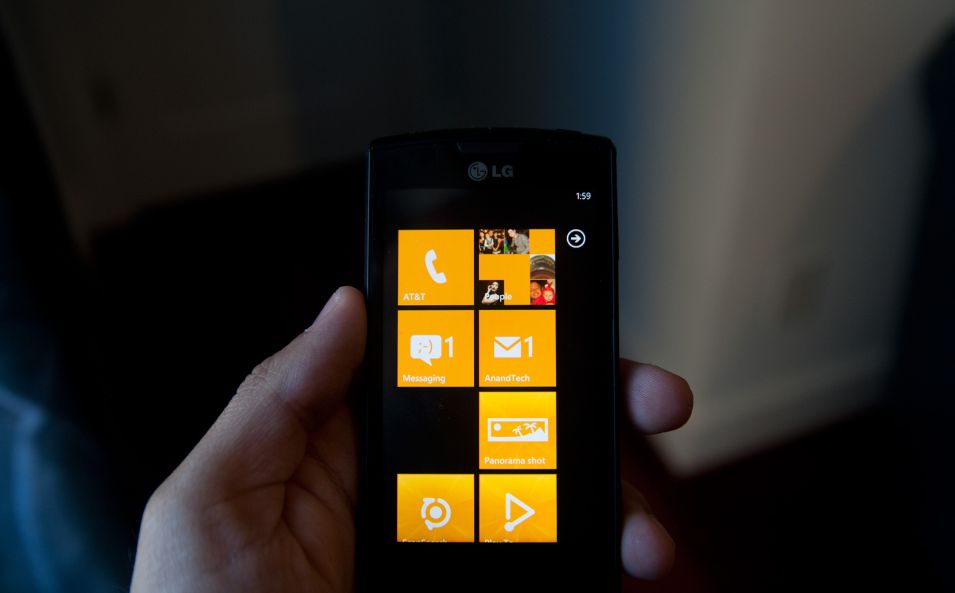
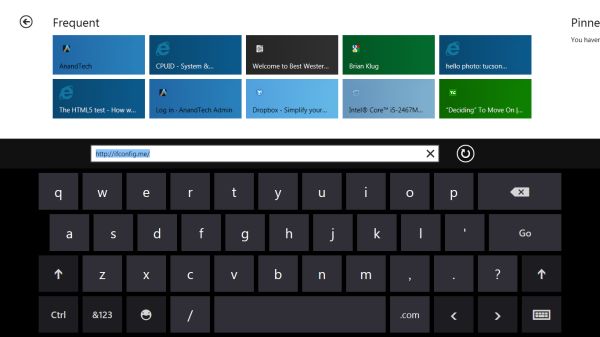
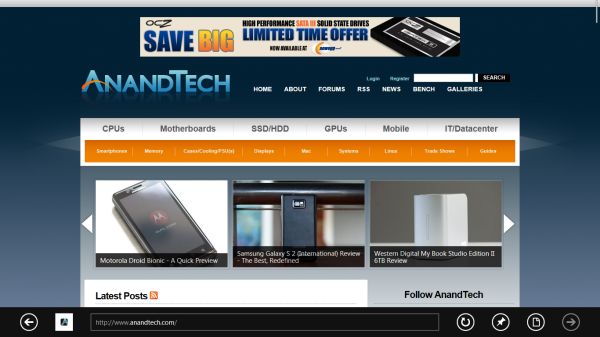
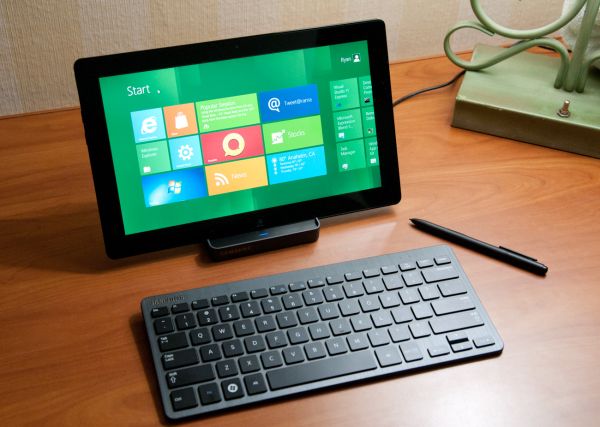
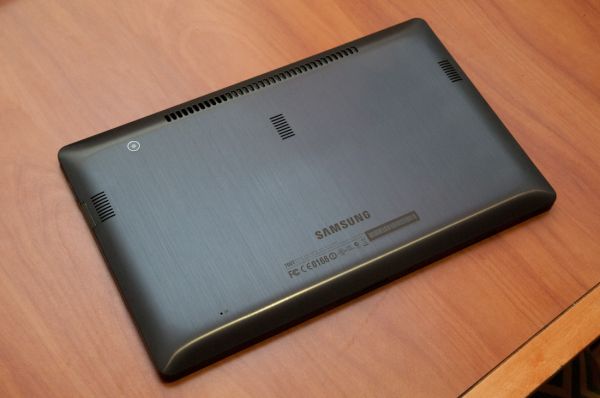
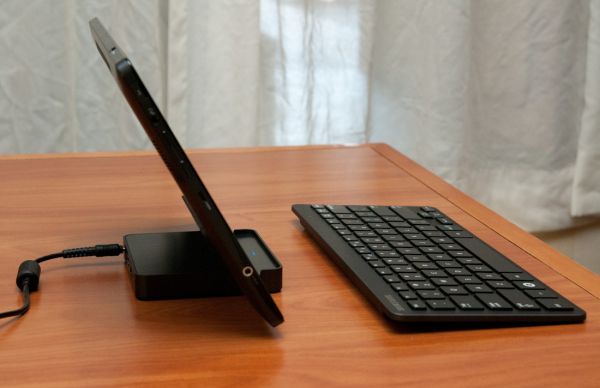








235 Comments
View All Comments
A5 - Tuesday, September 13, 2011 - link
If you think the only difference between Win95 and Win7 is the UI and "convenience functionality" (and I love how make this sound like a bad thing), then you are sorely mistaken.Exodite - Wednesday, September 14, 2011 - link
For the end user there's no discernible differences aside from those noted.Sure, we've gotten higher versions of APIs such as DirectX or whatever but in the end that matters very little.
UMADBRO - Tuesday, September 13, 2011 - link
Have fun with that. Let us all know what happens when you try and even get that outdated, abandoned POS online, much less being able to do anything even remotely useful, other then playing old, shitty games.Exodite - Wednesday, September 14, 2011 - link
I used my '92 Amiga as my primary computer until '04, at which point I built my first Wintel machine - mainly due to gaming.The Amiga still works, were connected to the Internet with a 10Mbit PCMCIA Ethernet adapter, had an excellent browser for the time, and still offers a better desktop experience than any version of Windows.
I realize most people familiar with the platform only ever used A500's with Kickstart 1.2 or 1.3 and never actually saw the OS due to using it as gaming console. That's unfortunate, as AmigaOS 3.x remains unmatched in performance, simplicity, power and convenience when put up against any modern desktop OS.
UMADBRO - Wednesday, September 14, 2011 - link
That must have been interesting. Ill admit, I also use older stuff for specific things, like my old P4 box running Win98SE for DOS and older Windows games. But I also realize that its usefulness is limited, at best. Eventually we all need to move on. Anyway, sorry for the hostility. The overall tone in these messages when I was reading last night just annoyed me to no end. The majority of people have made up their mind before even trying things out. I cant stand close minded people like that.Exodite - Wednesday, September 14, 2011 - link
No offense taken, I do see your point.For me personally I suppose the disappointment is two-fold;
The distinct lack of technical innovation, which I consider current iterations of Windows to be in desperate need of, and the hodge-podge UI design.
The latter will hopefully improve until release at least.
I'm personally not a fan of metro in any way, though for WP7 devices I have no problem acknowledging that it's a very functional design with it's own distinctive style.
Unfortunately I can't see an upside to its introduction on the desktop. Someone likened it to a 'consoleization' of the desktop and I can only think about how how apt that statement is.
Still, final judgment must be reserved for the release version.
Booster - Tuesday, September 13, 2011 - link
Looks like another 9 years on Windows 7 to me. There's no way I'm ever installing this crap.Booster - Tuesday, September 13, 2011 - link
I mean, how can you even multitask on this ridiculous garbage? I normally have like 10 browser windows open, 4-5 word and excel docs, plus a handful of Explorer windows. And I need to switch between all this really fast, copy and paste and so on. What am I supposed to do with this?!dagamer34 - Tuesday, September 13, 2011 - link
Stick to the normal desktop?ph0tek - Wednesday, September 14, 2011 - link
LOL. Exactly. Some of these people commenting are so thick i's truly amazing.